
|
Eng |
Associate Professor Vimol Srisukh Department of Food Chemistry, Faculty of Pharmacy, Mahidol University. Title image from : http://smartparentprogram.blogspot.com/2011/11/feeding-babies-lumpy-foods-before-9.html
Food allergy is “an adverse health effect arising from a specific immune response that occurs reproducibly on exposure to a given food”. An often quoted line from a poem of Titus Lucretis Cato (98 – 55 BC): “What is food to one, to another is rank poison”.
Food allergy can be categorized into 2 groups, Acute IgE-mediated type I hypersensitivity reactions and Non-IgE-mediated food allergies. This article will focus on IgE-mediated food allergy which is the most common. 
How often can food allergy be found?
Food allergy prevalence in the United States ranged from 1- 2% to 10%. The allergy can be found in 1 in 10 children in Australia; 1 in 15 children in U.S.A; and 1 in 20 children in Canada.
How severe are the symptoms of food allergy?
Symptoms of food allergy range from mild, moderate, to severe. The most severe reaction is anaphylaxis, which is an acute reaction affecting 2 or more organ systems that can be life-threatening.
Symptoms associated with food allergy reactions are as follows:
| Organ/System | Symptoms |
| Skin | Pruritis, Erythema/flushing, urticaria, angioedema |
| Eye | Pruritis, tearing, conjunctival injection, periorbital edema |
| Upper respiratory tract | Pruritis, nasal congestion, rhinorrhea, sneezing, hoarseness, laryngeal edema |
| Lower respiratory tract | Cough, wheezing, dyspnea, chest tightness/pain |
| Gastrointestinal | Oral pruritis, oral angioedema (lips, tongue, or palate), pharyngeal pruritis/tightness, colicky abdominal pain, nausea, vomiting, diarrhea |
| Cardiovascular | Tachycardia, dizziness, loss of consciousness/fainting, hypotension |
| Miscellaneous | Metallic taste in the mouth, uterine cramping/contractions, sense of impending doom |
What foods often cause food allergy?
Foods which have been reported to be the cause of food allergy are egg, milk, peanuts, tree nuts, soybean, and wheat. Other foods include sesame, seeds, seafoods, meats, and fruits.
Risk factors
Several risk factors for food allergy have been identified.
How soon does food allergy start in children? When will the children outgrow the allergic symptoms? What can parents do, regarding food preparations for these children?
Food allergies from different food allergens develop at various ages in children and adults. The severity of the symptoms for each allergen is different; so is the resolution age. Exposure to foods or food preparations can affect the allergenicity, the extent and the severity of the symptoms and the rate of tolerance acquisition. 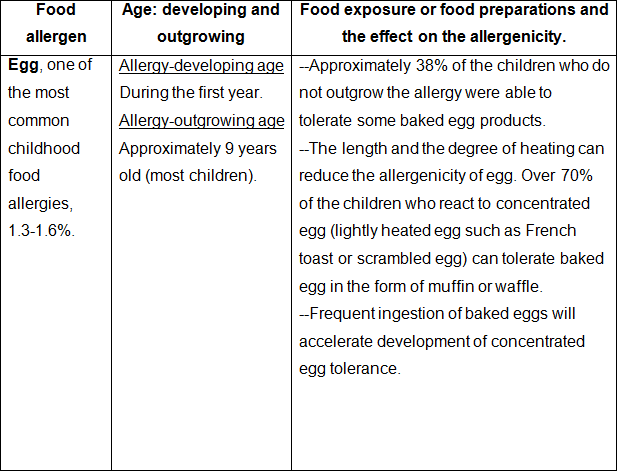
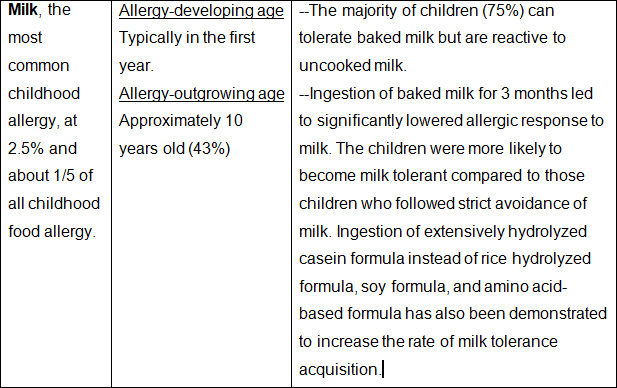
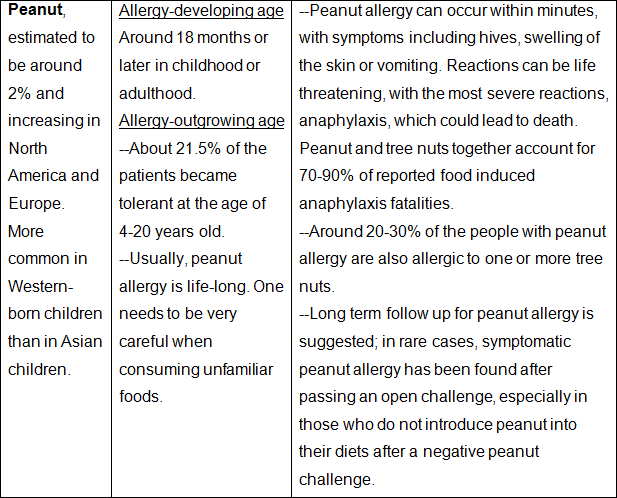
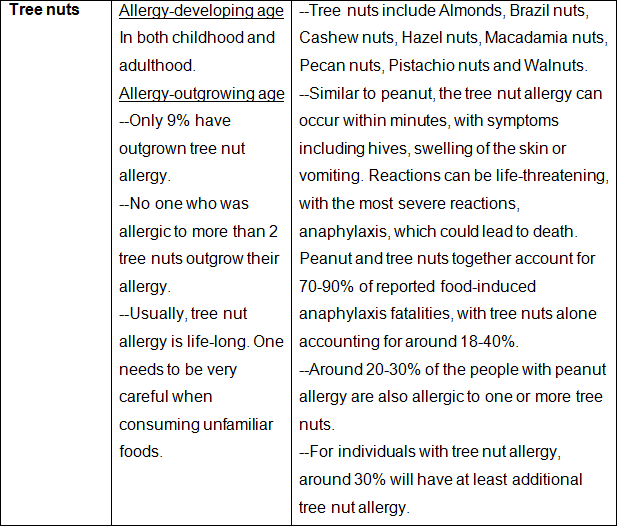
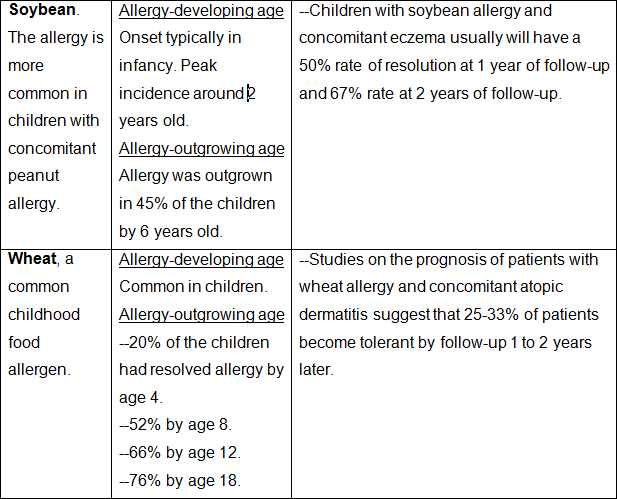
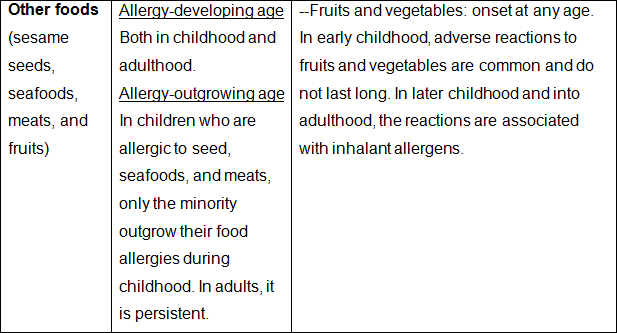
According to the above information, allergic reaction to foods could range from mild, moderate, to severe, life-threatening. Most of the allergy could develop during childhood. Feeding children, with the allergy history in the family, should be carried out with caution, especially peanut and tree nut allergies, from which the reactions could be fatal. If in doubt, the safest policy is to avoid those foods. In ready-to-eat foods or those that come in packages/boxes, the information on the ingredients is usually provided on the labels by responsible manufacturers. In restaurants and at food stalls, an inquiry is necessary to ensure that the foods do not contain particular food allergens. However, it was shown that the addition of baked-milk or egg to the children’s diet actually accelerated the development of tolerance to all forms of milk and egg, so these days early introduction of baked milk and egg products has become standard practice. Regular consultation with a doctor specializing in food allergy is highly recommended.